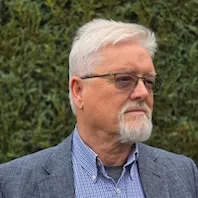Strategic AEM Architecture - Why Framework Thinking Beats Feature Chasing

Global Architecture That Scales
The world's largest AEM implementation taught me something crucial about strategic thinking. When Nissan-Renault needed 200+ websites across 30+ languages for five automotive brands, the challenge wasn't technical - it was creating architectural frameworks that could work consistently across different markets, teams, and requirements.
We developed decision-making frameworks that helped distributed teams make consistent choices without constant consultation. Performance standards that worked across different content types. Governance models that balanced corporate control with regional flexibility. When you're coordinating 15 teams and architects across four continents, strategy becomes the foundation everything else builds on.
This approach has shaped every major project since. At EE, it prevented platform crashes during high-traffic product launches. At MediaMonks, it enabled custom design frameworks that traditional AEM couldn't support. The principle remains consistent: strategic foundations create space for tactical excellence.
AI Integration Strategy That Works
Current conversations about AI and content management often focus on capabilities rather than strategy. Teams get excited about automated content generation or intelligent tagging without considering how these tools fit into existing workflows or impact content quality.
I focus on AI-enhanced processes that amplify human creativity rather than replace it. We're developing governance frameworks for automated content that ensure brand consistency while improving efficiency. The key insight is understanding where AI adds genuine value versus where it creates unnecessary complexity.
Edge Delivery Services represent another strategic opportunity. The performance benefits are significant, but implementation requires careful evaluation of operational complexity and team capabilities. I help organisations develop frameworks for making informed decisions about when and how to integrate these technologies.
Capability Building Through Mentoring
Technical solutions are temporary. Team capabilities are permanent. My mentoring approach focuses on building strategic thinking skills that help teams navigate future challenges independently.
At MediaMonks, I established their first AEM practice from scratch. Rather than just delivering technical solutions, we developed architectural patterns that preserved their exceptional design standards while leveraging AEM's content management strengths. The teams I worked with went on to deliver outstanding results for Twitter and many others.
At Ford, mentoring centered on headless AEM implementations and translation workflow integration. The goal wasn't just successful project delivery - it was ensuring teams understood the architectural decisions well enough to maintain and evolve the solutions over time.
This knowledge transfer approach means organisations build internal expertise that reduces long-term dependency on external consultants while improving decision-making capabilities across the team.
Strategic Plan Reviews
Some of my most valuable work happens before implementation begins. Plan reviews often reveal gaps between intention and reality - marketing requirements that conflict with performance goals, AI integration proposals that ignore workflow constraints, architectural approaches that create future operational challenges.
These sessions focus on asking the right questions early. How do proposed features align with existing content processes? What new capabilities will teams need to develop? Where might seemingly simple requirements create complex implementation challenges?
The goal is identifying potential issues while solutions are still flexible and cost-effective. Strategic review at the planning stage prevents problems that become expensive to solve during implementation.
Industry Leadership and Knowledge Sharing
As a member of Boye & Company's CMS Experts Group and regular industry speaker, I stay connected with emerging trends while contributing insights from real-world implementations. This dual perspective helps clients understand where the industry is heading while making strategic decisions based on proven approaches.
The "AEM Guy" reputation in CMS circles comes from consistently translating complex technical concepts into strategic guidance that drives successful outcomes. Whether explaining architectural trade-offs to executives or helping teams evaluate new technologies, the focus remains on practical strategic thinking.
Independent Strategic Partnership
Since August 2022, I've worked exclusively as an independent consultant through Digital Domain Technologies. This allows me to focus on strategic engagements where experience and objectivity make the most difference.
Recent clients each bring distinct challenges that benefit from strategic review and architectural guidance. The common thread is organisations seeking strategic partnership rather than tactical delivery.
I'm available for advisory engagements, freelance opportunities, and part-time consulting roles - but not seeking full-time positions. This approach allows me to provide focused expertise when and where it's needed most, whether that's a strategic review, implementation guidance, or ongoing architectural mentorship.
Whether you need architectural strategy development, AI integration planning, team capability building, or plan reviews, the approach remains consistent: helping teams make better strategic decisions that create long-term success rather than short-term fixes.
Strategic advantage in digital transformation comes from having the right frameworks in place before you need them. That's where experienced advisory partnership makes the difference.
Related Articles